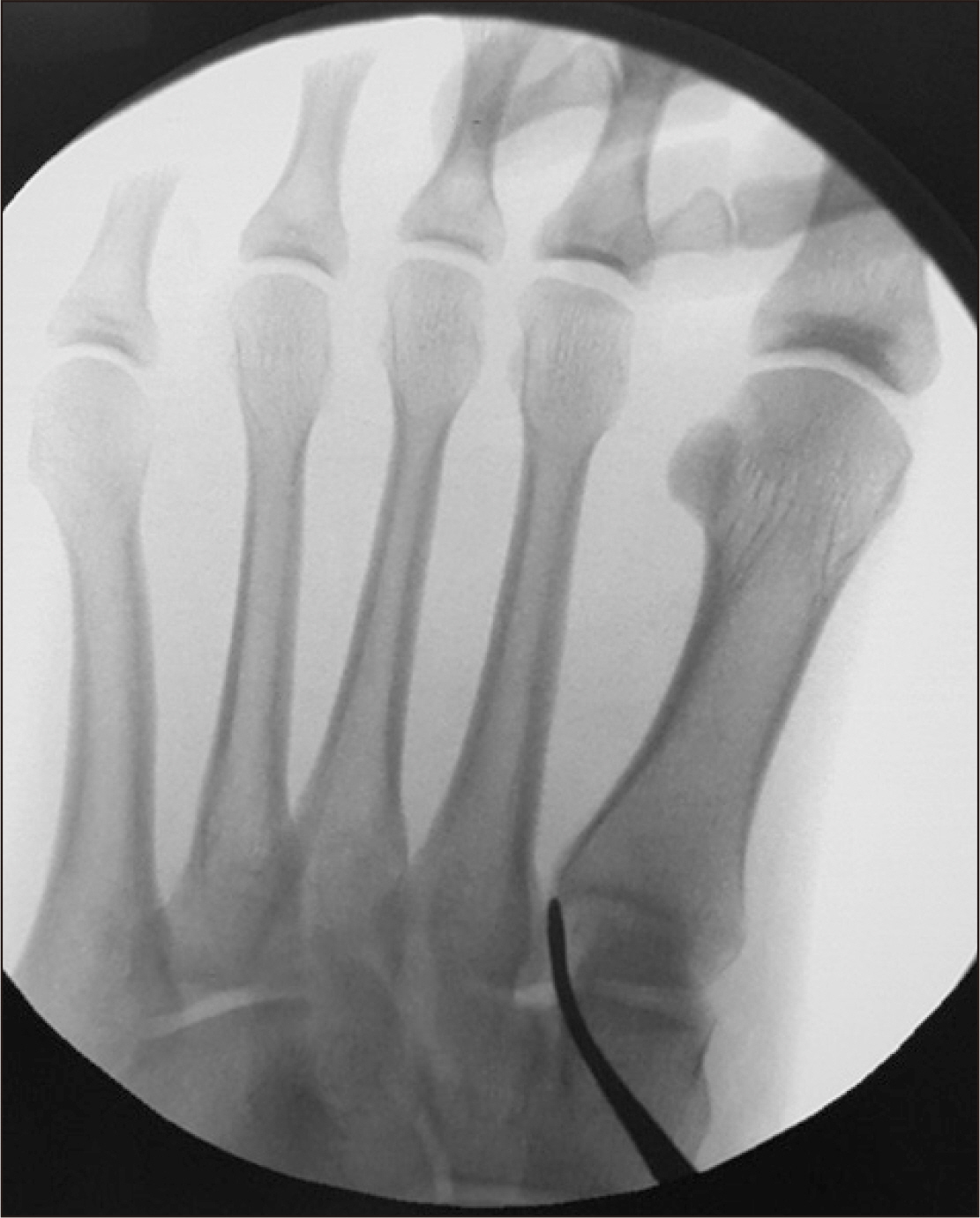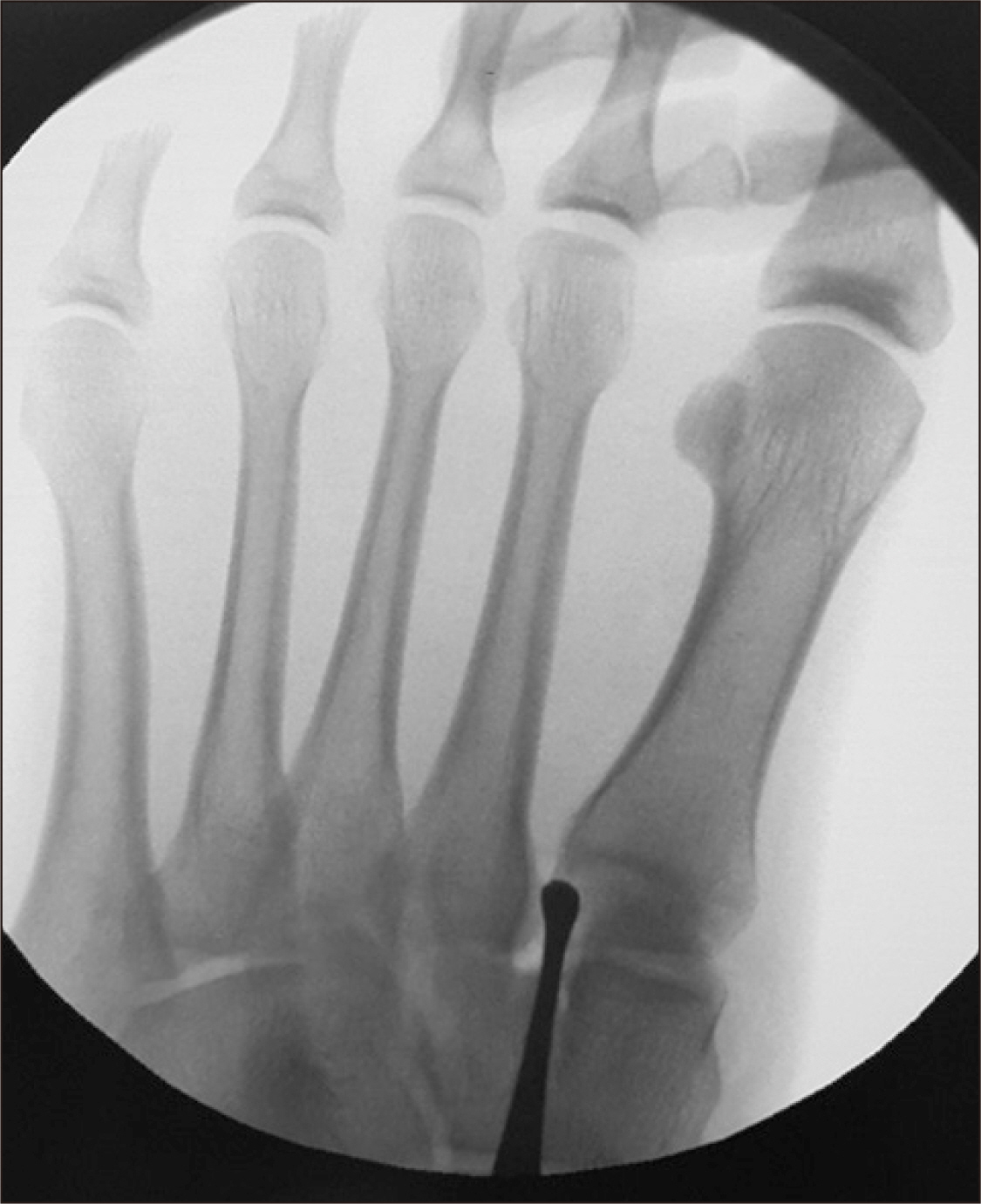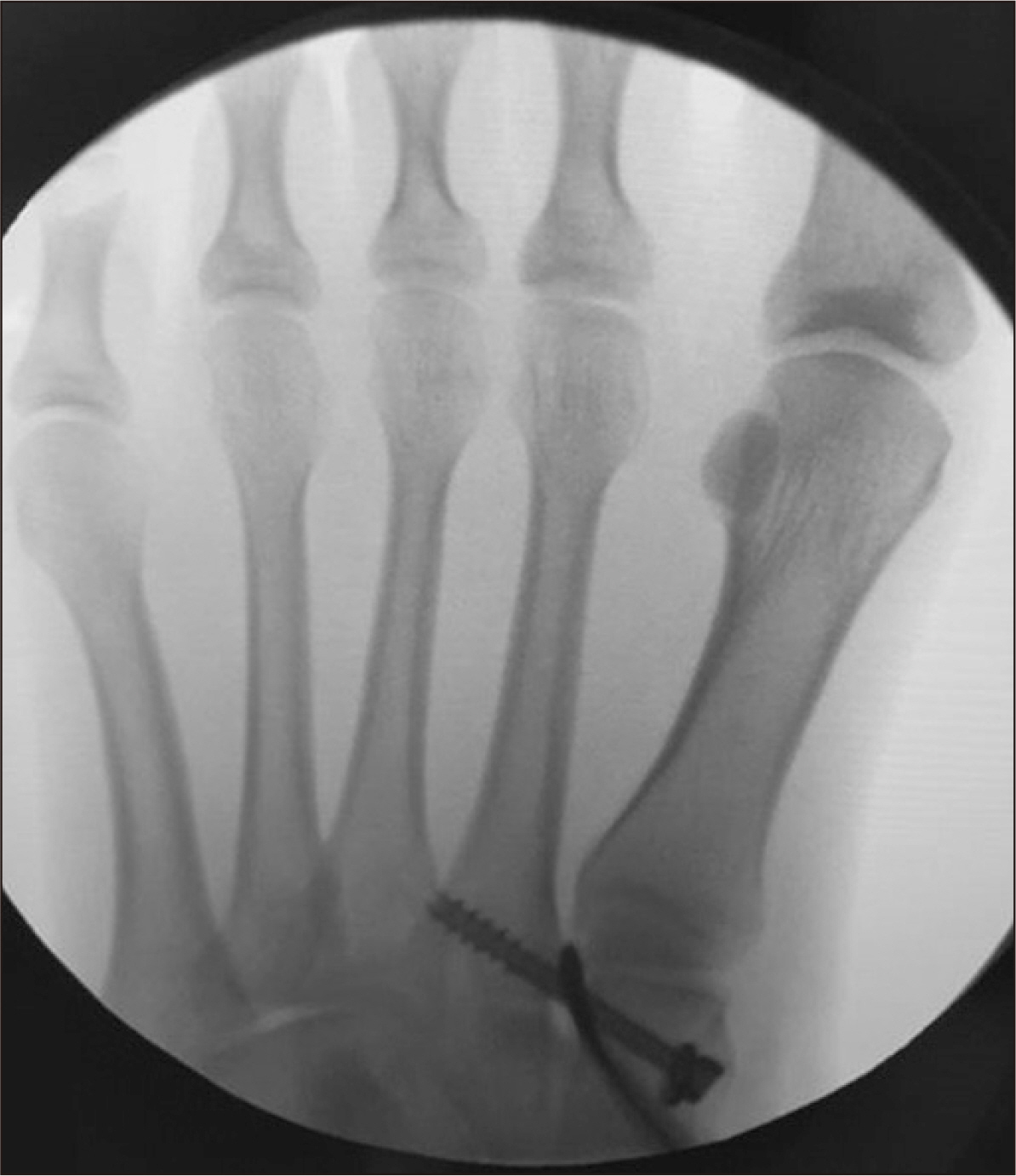J Korean Foot Ankle Soc.
2020 Dec;24(4):165-167. 10.14193/jkfas.2020.24.4.165.
Freer Test for an Intraoperative Evaluation of a Lisfranc Joint Injury: A Technical Report
- Affiliations
-
- 1Department of Foot and Ankle Surgery, Nowon Eulji Medical Center, Eulji University, Seoul, Korea
- KMID: 2509539
- DOI: http://doi.org/10.14193/jkfas.2020.24.4.165
Abstract
- Failure to achieve stable fixation during surgery for a Lisfranc joint injury leads to subtle instability that causes dysfunction and posttraumatic osteoarthritis. Therefore, it is important to check for appropriate fixation during surgery. This paper reports a test that evaluates the joint instability dynamically during the open reduction of the Lisfranc joint and checks the stability after fixation. a Freer elevator was inserted into the interosseous area between the medial cuneiform and second metatarsal base, and a twisting force was applied to evaluate the dynamic instability of the Lisfranc joint. After fixation of the Lisfranc joint, the stability of the fixation could be tested by trying this maneuver with the Freer elevator. Overall, the Freer test can be considered a valuable test in open surgery for a Lisfranc joint injury.
Keyword
Figure
Reference
-
1. Curtis MJ, Myerson M, Szura B. 1993; Tarsometatarsal joint injuries in the athlete. Am J Sports Med. 21:497–502. doi: 10.1177/036354659302100403. DOI: 10.1177/036354659302100403. PMID: 8368407.
Article2. Raikin SM, Elias I, Dheer S, Besser MP, Morrison WB, Zoga AC. 2009; Prediction of midfoot instability in the subtle Lisfranc injury. Comparison of magnetic resonance imaging with intraoperative findings. J Bone Joint Surg Am. 91:892–9. doi: 10.2106/JBJS.H.01075. DOI: 10.2106/JBJS.H.01075. PMID: 19339574.3. Nunley JA, Vertullo CJ. 2002; Classification, investigation, and management of midfoot sprains: Lisfranc injuries in the athlete. Am J Sports Med. 30:871–8. doi: 10.1177/03635465020300061901. DOI: 10.1177/03635465020300061901. PMID: 12435655.4. Lenczner EM, Waddell JP, Graham JD. 1974; Tarsal-metatarsal (Lisfranc) dislocation. J Trauma. 14:1012–20. doi: 10.1097/0000537397412000-00003. DOI: 10.1097/00005373-197412000-00003. PMID: 4431066.
Article5. Cain PR, Seligson D. 1981; Lisfranc's fracture-dislocation with intercuneiform dislocation: presentation of two cases and a plan for treatment. Foot Ankle. 2:156–60. doi: 10.1177/107110078100200307. DOI: 10.1177/107110078100200307. PMID: 7341390.
Article6. Trevino SG, Kodros S. 1995; Controversies in tarsometatarsal injuries. Orthop Clin North Am. 26:229–38.
Article7. Faciszewski T, Burks RT, Manaster BJ. 1990; Subtle injuries of the Lisfranc joint. J Bone Joint Surg Am. 72:1519–22. DOI: 10.2106/00004623-199072100-00013. PMID: 2254360.
Article8. Ly TV, Coetzee JC. 2006; Treatment of primarily ligamentous Lisfranc joint injuries: primary arthrodesis compared with open reduction and internal fixation. A prospective, randomized study. J Bone Joint Surg Am. 88:514–20. doi: 10.2106/JBJS.E.00228. DOI: 10.2106/JBJS.E.00228. PMID: 16510816.





